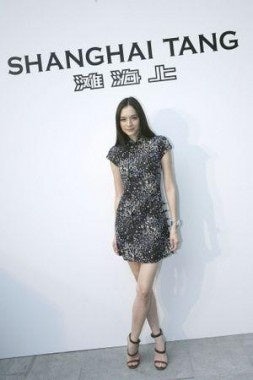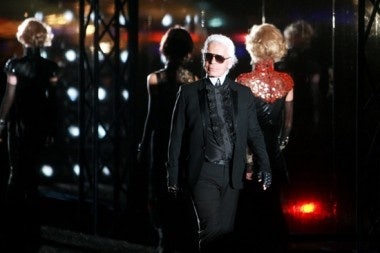Hermès, Other Brands Recognizing Importance Of Chinese Luxury Market, Designing Shanghai-Inspired Collections And Limited Edition Items#

Lingering global economic woes have sent Chinese luxury consumers leapfrogging past their counterparts in more established markets, leading the world's top luxury brands to fight tooth and nail for more market share in a market that now accounts for over 25% of the world's annual luxury consumption. To do this, many brands are embarking on ambitious expansion plans, branching out from the top-tier markets that have incubated brands like Louis Vuitton and Gucci for the past couple of decades into second- and increasingly third-tier cities. Other brands, however, are taking a somewhat different approach.
As Jing Daily wrote recently, companies that are worried about spreading themselves too thin in China and alienating the wealthy customers who have bankrolled their success in the mainland are increasingly looking to bring together their western pedigree and Chinese cultural or historical design cues in order to make a stronger connection with their key demographics. The oft-noted example of this is the new brand currently in the works by Hermès, Shang Xia, which Hermès has committed to building from the ground up using Chinese designers, Chinese materials and Chinese craftsmanship. While we'll have to wait a while longer to see Shang Xia's collections in person, it's likely one of the first of many China-only partnerships we're likely to see among the world's top luxury brands.
Looking to bring together east and west, both in terms of design as well as marketing, many brands are eyeing Shanghai as a source of inspiration. This January, Prada teamed up with the Chinese artist and filmmaker Yang Fudong to produce the short film "First Spring," and that same month Karl Lagerfeld held the Metier d’Arts show at the newly opened Chanel boutique on the Bund. Also in January, David Lynch filmed his "Lady Dior" advertisement with Marion Cotillard in Shanghai. Clearly, the former (and perhaps once again) "Paris of the East" is the place to be for the world's top luxury brands. But will they be the only ones to profit from Shanghai's allure? Or will up-and-coming Chinese brands find their niche as well?
This week, Ifeng (Chinese) looks at the phenomenon of "Shanghai Inspiration," noting that the multiculturalism of Shanghai has done nothing to blunt the city's mysterious Eastern atmosphere. (Translation by Jing Daily team.)
The ten-mile foreign field, a life of debauchery. I'm worried that lots of foreigners still base their impression of Shanghai on the 1930s. No wonder Shanghai was once known as the "Paris of the East," at that time the city was one of China's only open ports, and it used this to its advantage to become China's financial and arts epicenter. This is where China and the West melded together: Europeans, Russians, Japanese, Americans and Chinese together created a multicultural city, glowing with vitality while still maintaining the mysterious atmosphere of the Far East.
Take Olivier Coquerel, artistic director at the French luxury brand S. T. Dupont, as an example. Although he'd only been to Shanghai once in the last few years, but his creative inspiration was stimulated by the 20th century [history of Shanghai]. Recently, DuPont produced a tribute to this city, the "Shanghai" limited edition series, which included Ligne 2 cigarette lighters, a Néo-Classique Président pen, cufflinks and belts, 18 products that ranged in price from 10,000-15,000 RMB (US$1,465-2,197). Aside from antique or poetic design cues, DuPont also took into consideration the importance of the number 8 in Chinese culture, not only selecting 8 types of yellow topaz -- which were hand-encrusted into lighters and pens -- but calling this edition "1088," a number believed to bring good luck. "This [collection] embodies the viewpoint and feeling of foreigners towards traditional Chinese design," Olivier Coquerel told Global Entrepreneur. "You can say it's a kind of dream or desire."

The article goes on to mention Karl Lagerfeld's recent event in Shanghai, saying that his recent event on the Huangpu River, which straddles the Pudong new area and the Bund, captured the zeitgeist, with Pudong's gleaming skyscrapers providing the ultimate backdrop for the party. After a short profile of Yang Fudong's "First Spring" short film/advertisement for Prada, the article goes on to point out the most effective ways that brands can enter -- and create products that will appeal to -- the Shanghai market:
For international brands, borrowing elements of Shanghai to create a unique brand flavor might be the "least aggressive" way to enter the Chinese and Asian markets. Beginning last August, world famous watch brand Longines launched the "Find the oldest Longines watch in China" campaign, which found 20 of the rarest Longines watches in China out of 336 entrants. Among these, half came from Shanghai. As Longines China region vice president Li Li told this publication, at the end of the 19th century, Longines dominated the Chinese market, designing watches that incorporated dragons and other [popular] designs. In the early 1940s, many of Shanghai's most popular movie stars endorsed Longines products.
In terms of the tastes of Shanghai people, the yellow or black dials, diamonds and other design cues that are unpopular overseas are extremely popular in Shanghai. "Shanghai has a developed economy, which means that from the 19th century onwards, [Shanghainese] were astonishingly able to accept fresh ideas," said Li Li. It's true...Shanghai has digested and absorbed, then re-envisioned western style and culture, and this is what international brands have been looking for.
The article goes on to discuss Chinese brands that have made an impression on the global stage, including Shanghai Tang, started in 1994 by David Tang:
Shanghai Tang improved on the late Qing Dynasty nobility's clothing, using very particular workmanship and materials like silk and velvet. Indeed, the brand has incorporated Chinese calligraphy, auspicious symbols and other unique cultural elements that have laid the cornerstones of the brand's success, but mixing Eastern and Western design has done nothing to interfere with [the wearability of Shanghai Tang clothing].
And top French brand Hermès has taken it a step further than Shanghai Tang. This year, Hermès established a specialized brand aimed specifically at the Chinese market, Shang Xia. Shang Xia emerged from a Shanghai clothing company, and was later fully bought out by Hermès. This series uses Chinese materials and production techniques, reflecting Chinese culture but at a lower price-point than Hermès. This spring, the brand's first store will soon open in Shanghai. Although China embraces foreign brands more and more [each year], as the country becomes the world's largest luxury consumer market the move by Hermès is obviously quite risky, but who knows if [Shang Xia] might draw on its unique position to make its mark among the world's top luxury brands?
In [Shanghai] Hongqiao Airport, through the pathway that leads to the city center, you might see a billboard that reads "Welcome to Beautiful Shanghai." Some people might think of it as China's most fashion-conscious big city, its most exciting commercial center, and [think of its] nickname, the "Paris of the East." But keep in mind, in terms of individuality, Paris is Paris, Shanghai is Shanghai.